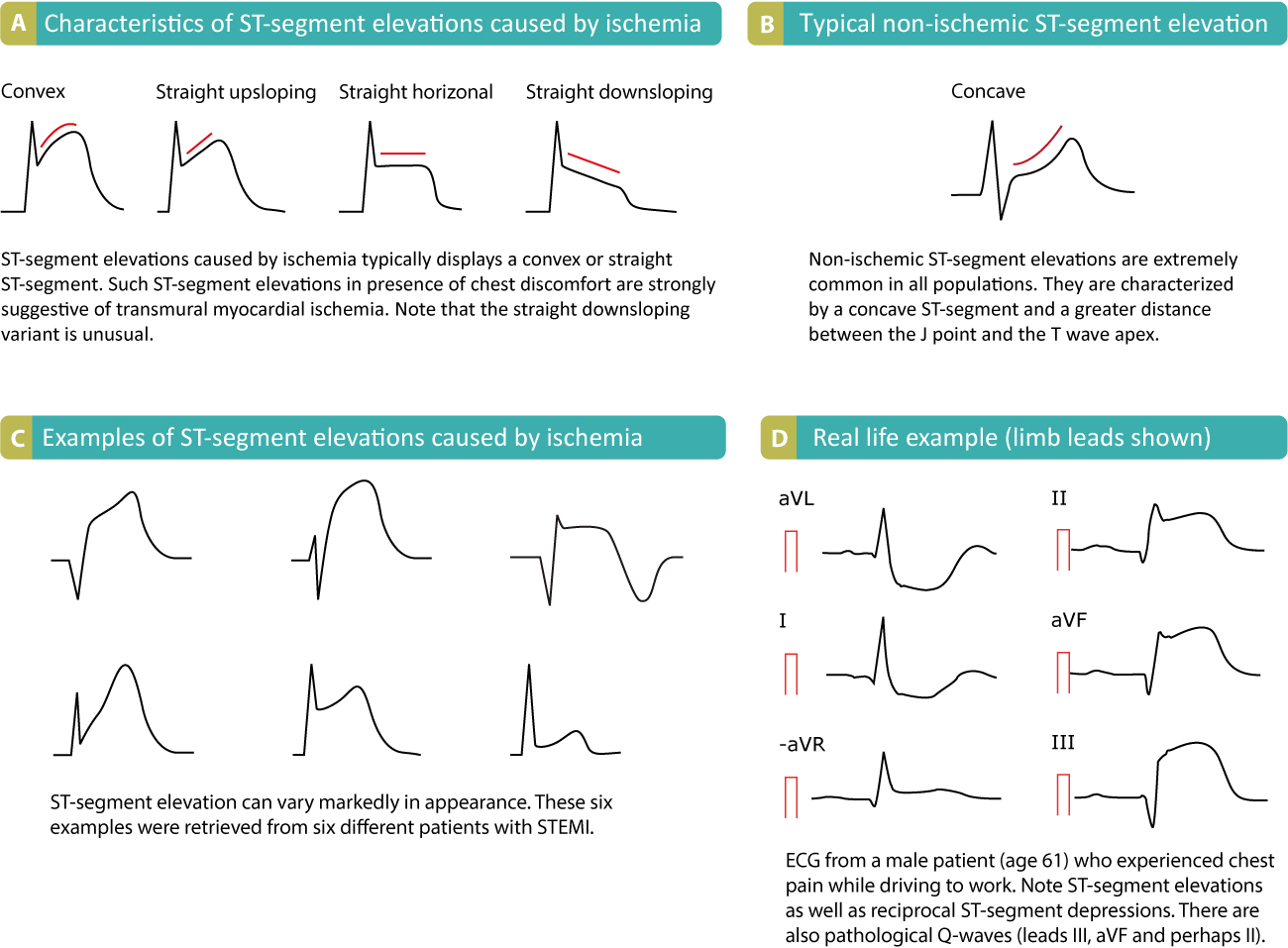
ST segment elevation in acute myocardial ischemia and differential diagnoses
ST segment elevation in acute myocardial ischemia ST segment elevations
From cell to reperfusion
The section on Clinical Electrocardiography offers an in-depth exploration of the fundamental principles and practical applications of ECG in cardiovascular medicine. This section provides a clear, step-by-step guide to understanding and interpreting ECGs, blending theoretical knowledge with real-world cases to equip clinicians with the skills necessary to enhance patient outcomes. Authored by Dr. Araz Rawshani, it is one of the world’s most-read resources on ECG interpretation. This comprehensive section guides users from basic concepts to advanced levels of understanding, incorporating the latest guideline recommendations. Additionally, self-assessment tests are available for each topic covered.

ST segment elevation in acute myocardial ischemia ST segment elevations
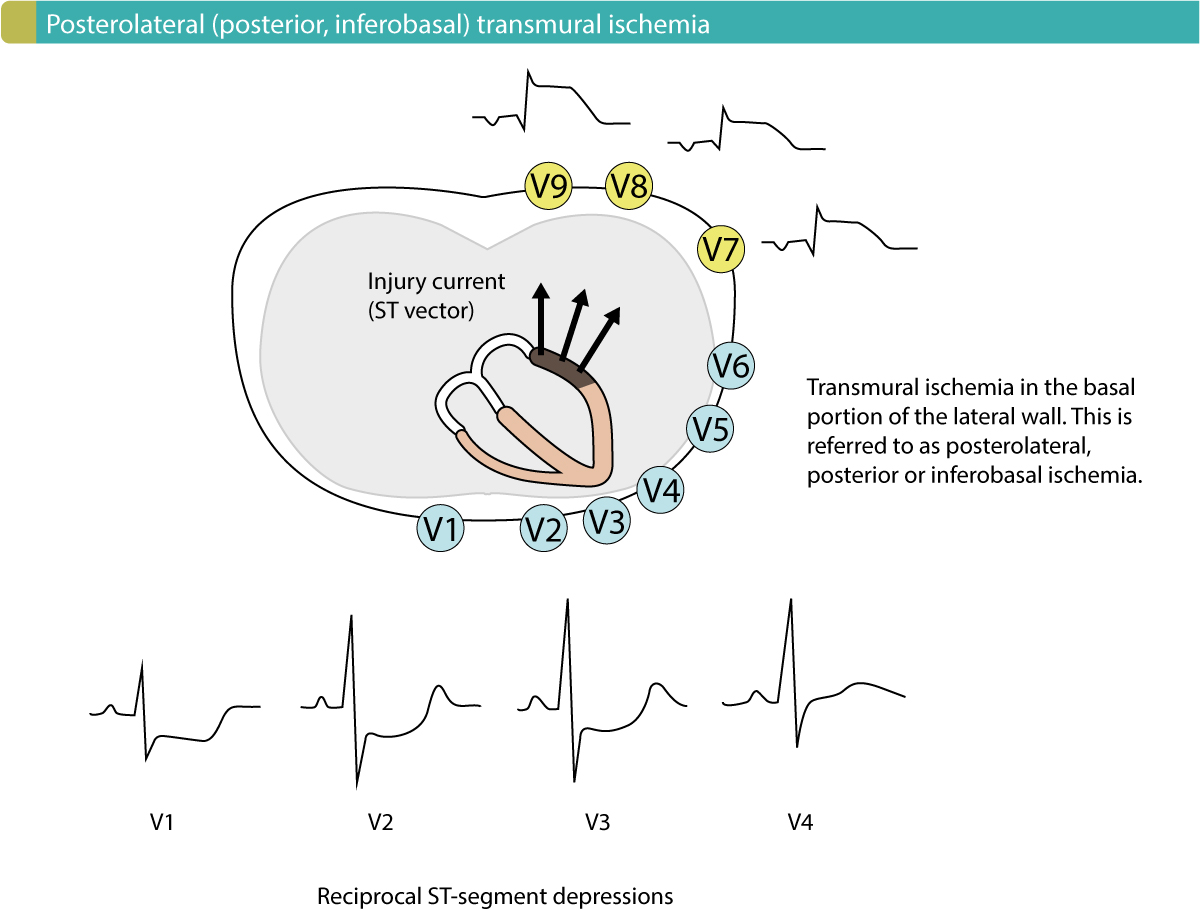
ST elevation myocardial infarction (STEMI) without ST segment elevations on
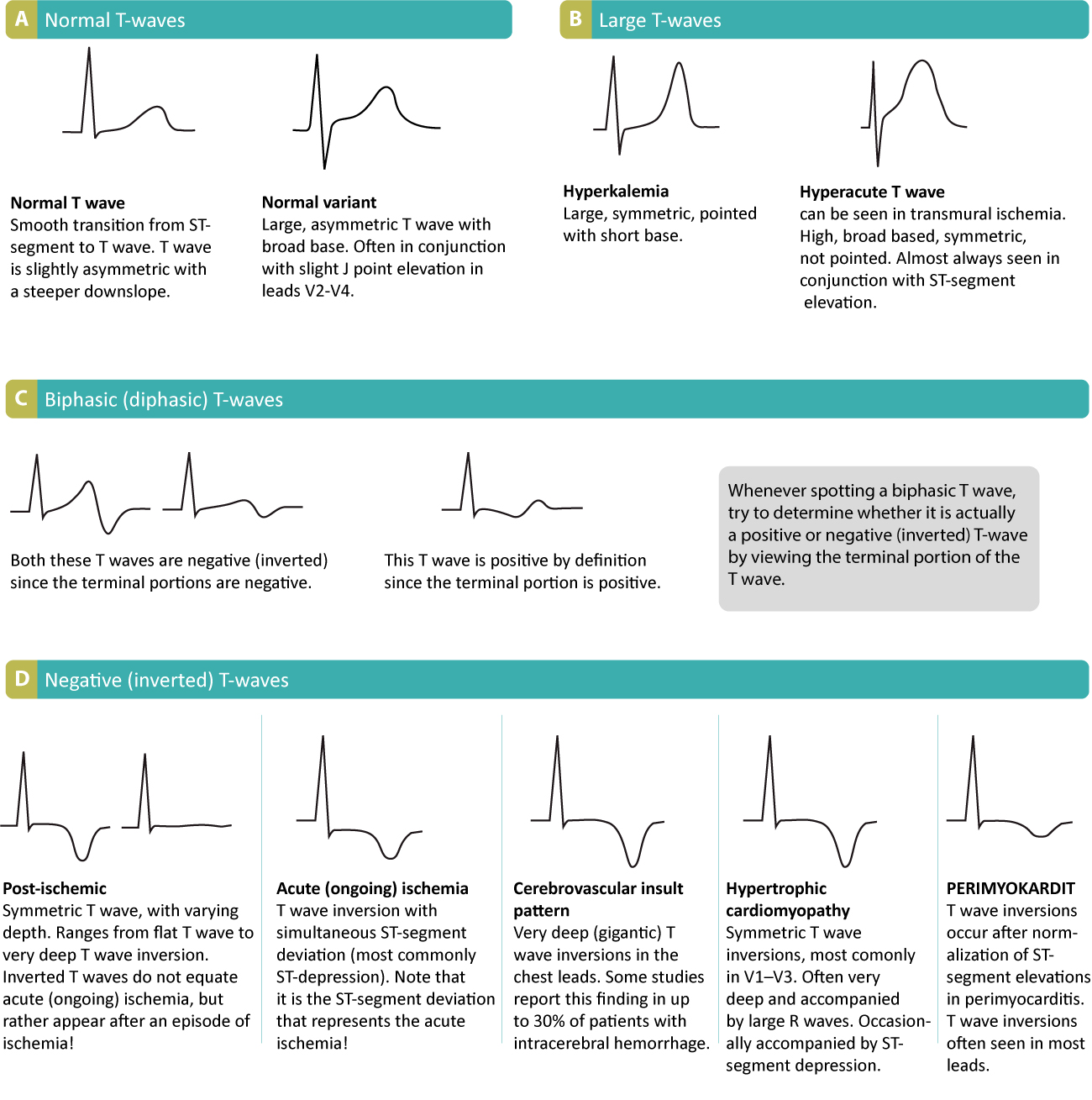
T-wave changes in acute myocardial infarction & ischemia A thorough
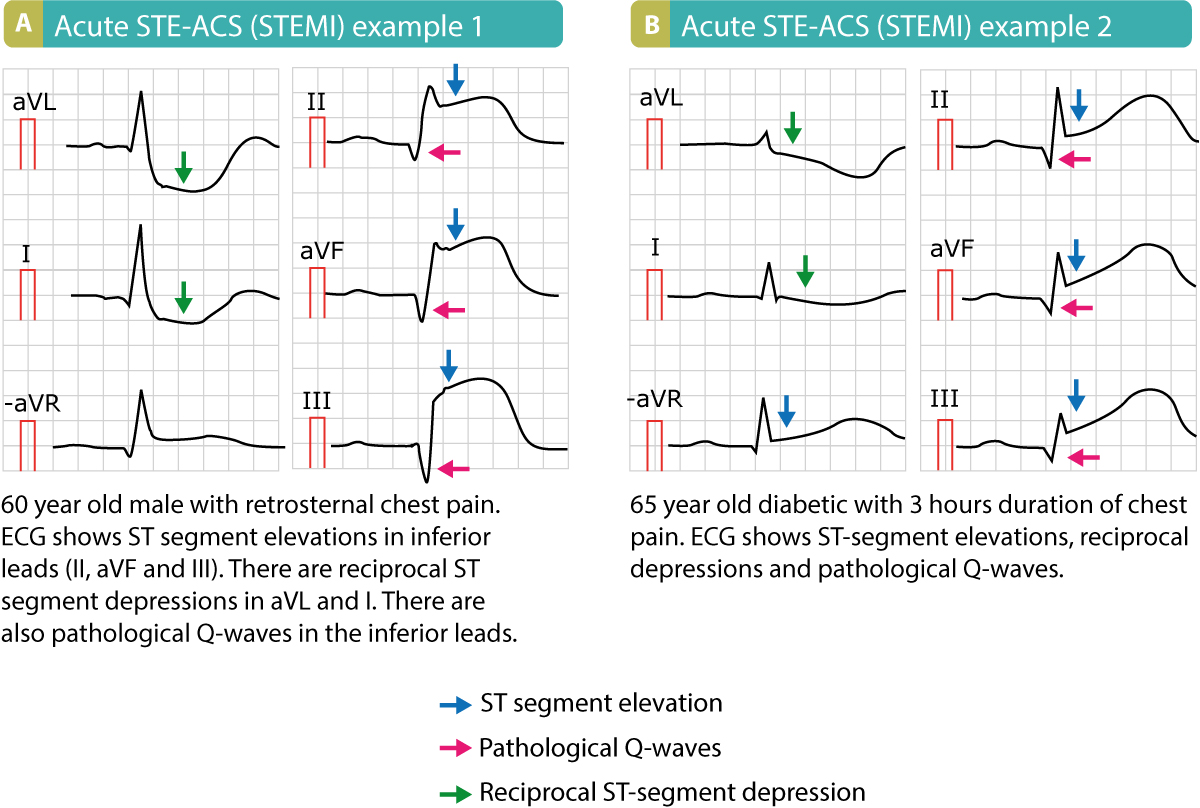
Pathological Q-waves are evidence of myocardial infarction Myocardial infarction – particularly
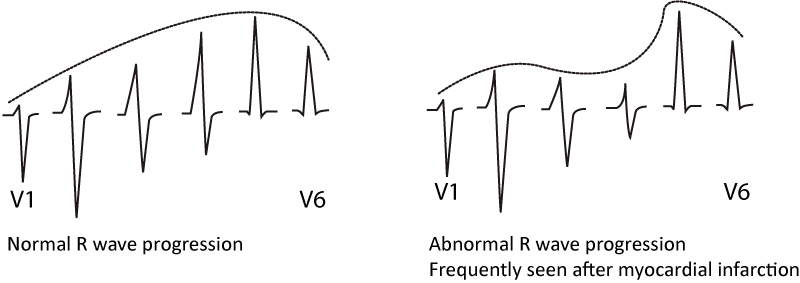
Pathological R-wave progression Normal R-wave progression implies that the R-wave

Conduction defects caused by myocardial ischemia and infarction Bradycardia and

Using the ECG to localize myocardial infarction / infarction and determine the
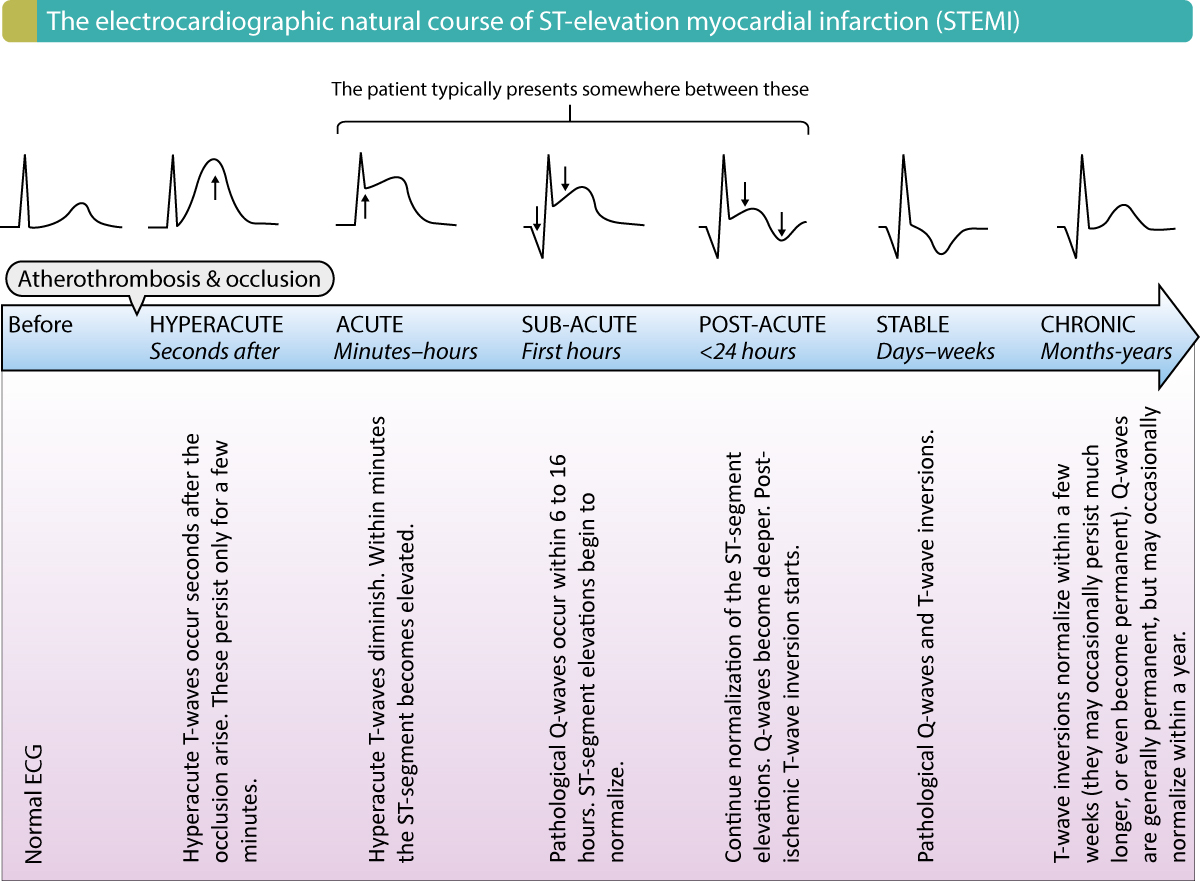
The ECG in assessment of myocardial reperfusion The ECG is

Approach to patients with chest pain: differential diagnoses, evaluation and management
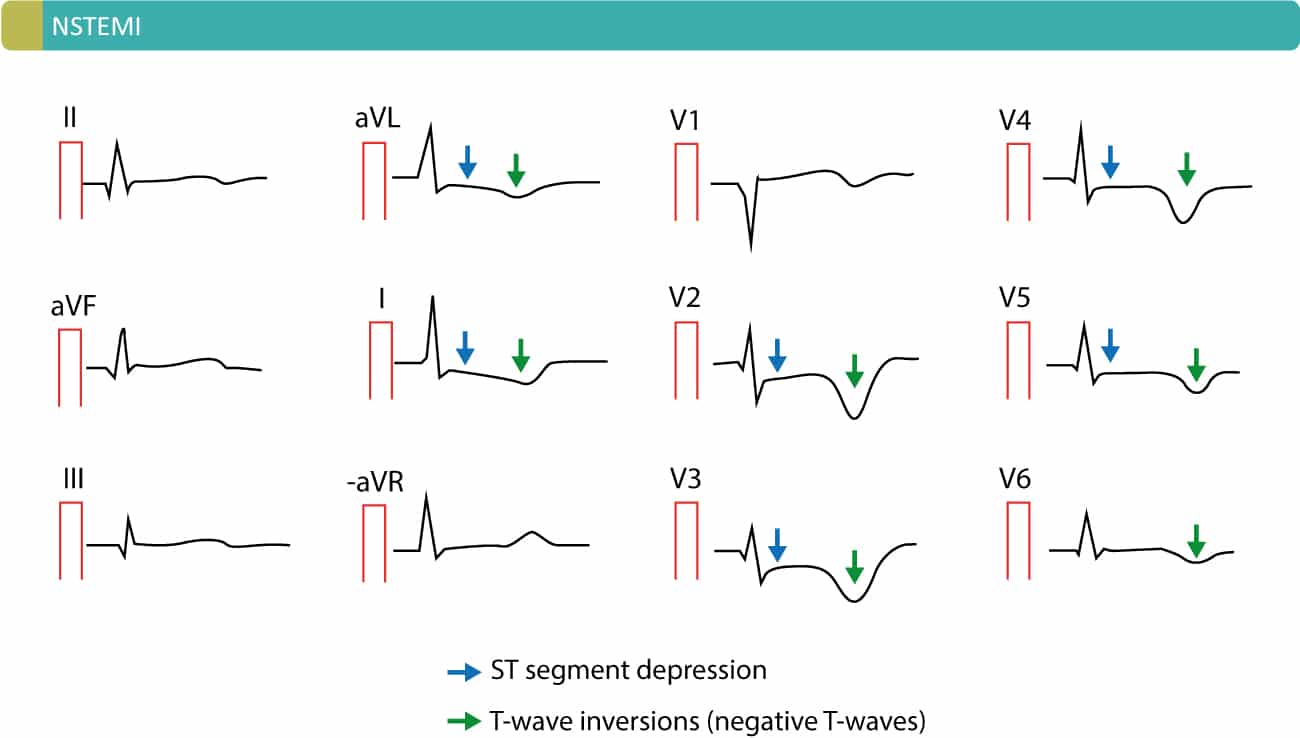
Non ST Elevation Acute Coronary Syndromes (NSTE-ACS): Non ST Elevation

STEMI (ST Elevation Acute Myocardial Infarction): Epidemiology, Diagnosis (ECG), Criteria
Please refer to the previous chapter: LQTS (Long QT Syndrome)
Definition of normal and pathological pediatric and neonatal ECG The
Neonatal period Table 1. Normal limits for ECG parameters during
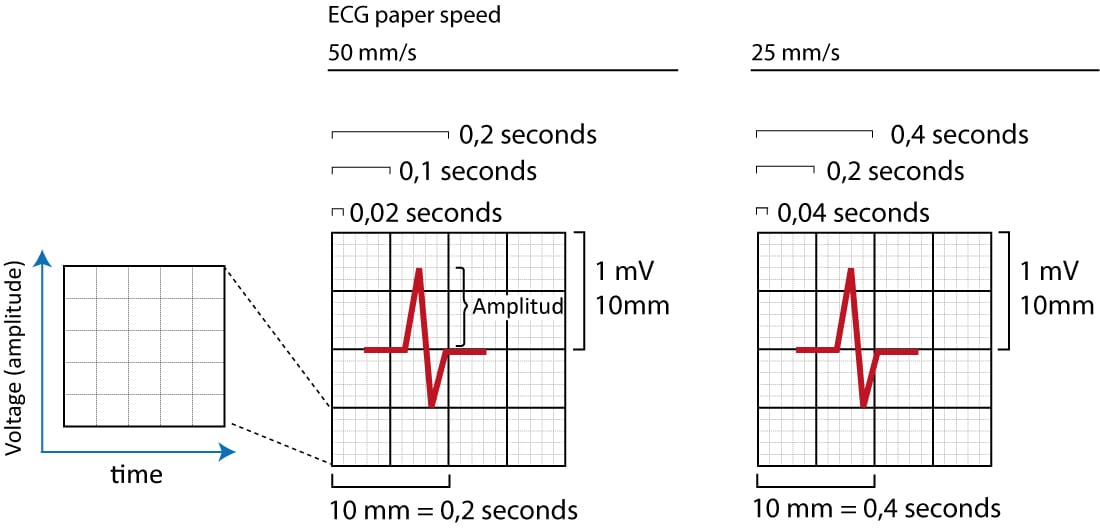
ECG leads and recording ECGs in pediatric patients (children) Principles
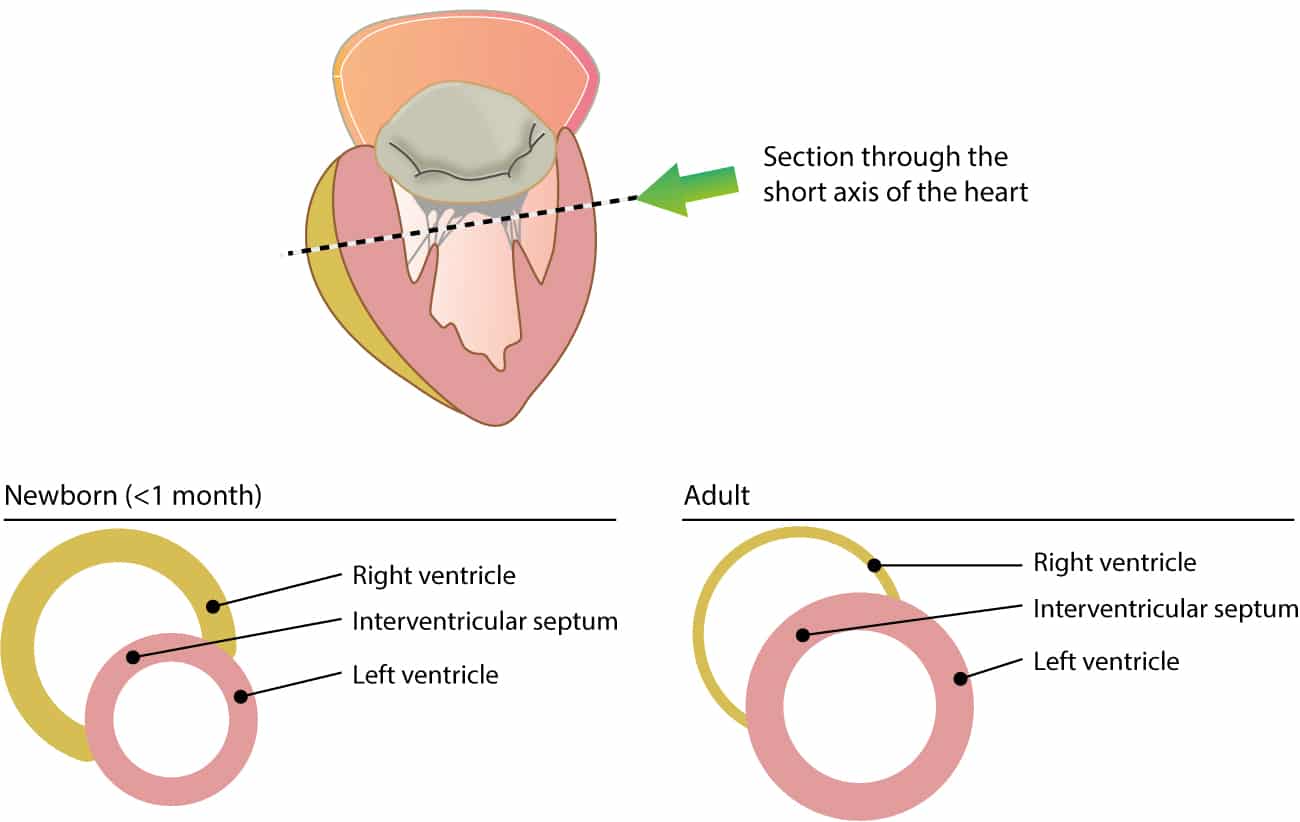
Principles of pediatric & neonatal ECG interpretation Pediatric and neonatal
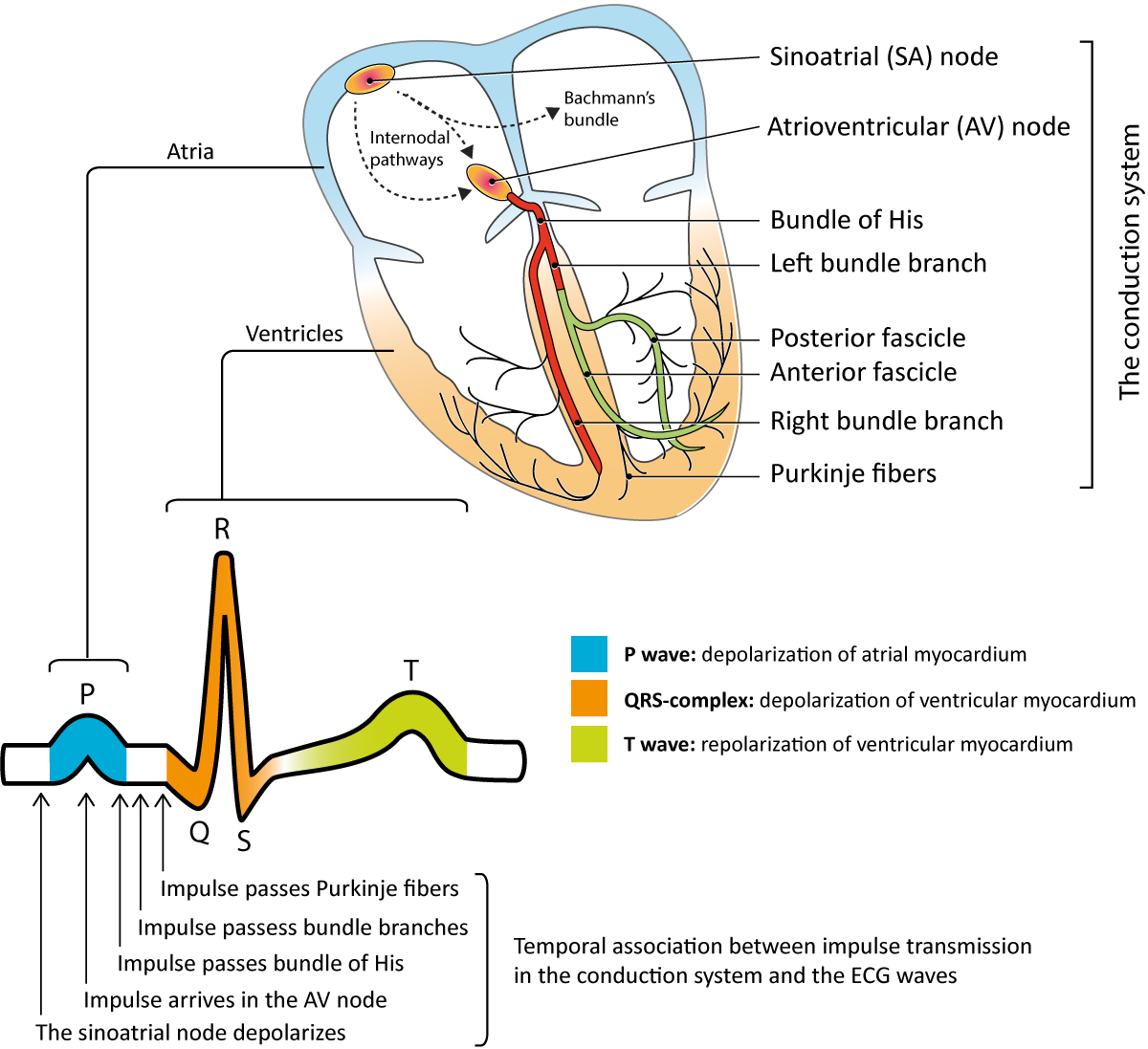
The artificial pacemaker is one of the great medical inventions
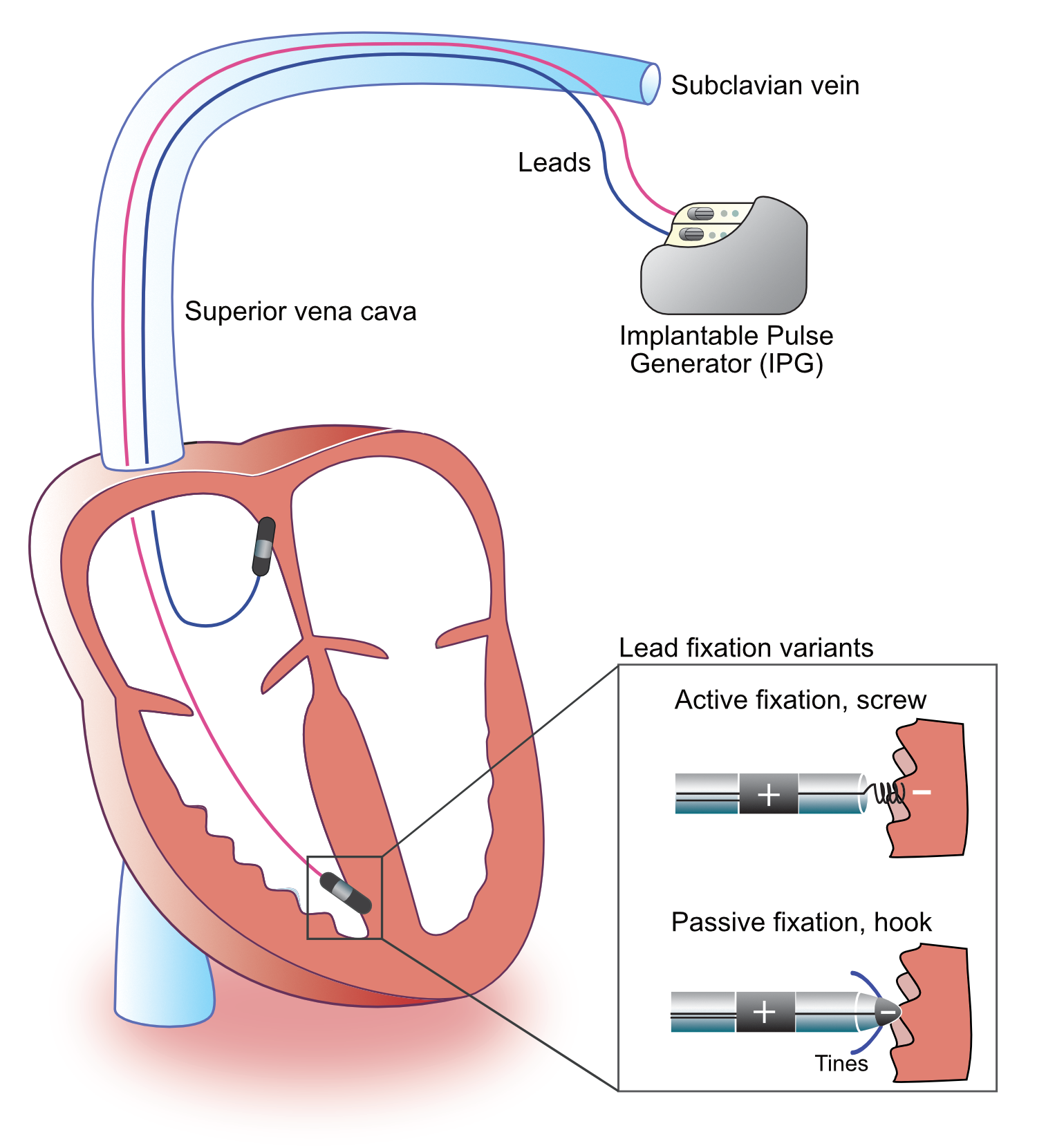
Principles of myocardial excitability Myocardium is excitable not only by

Interpreting pacemaker ECGs Assessing pacemaker function requires knowledge of the
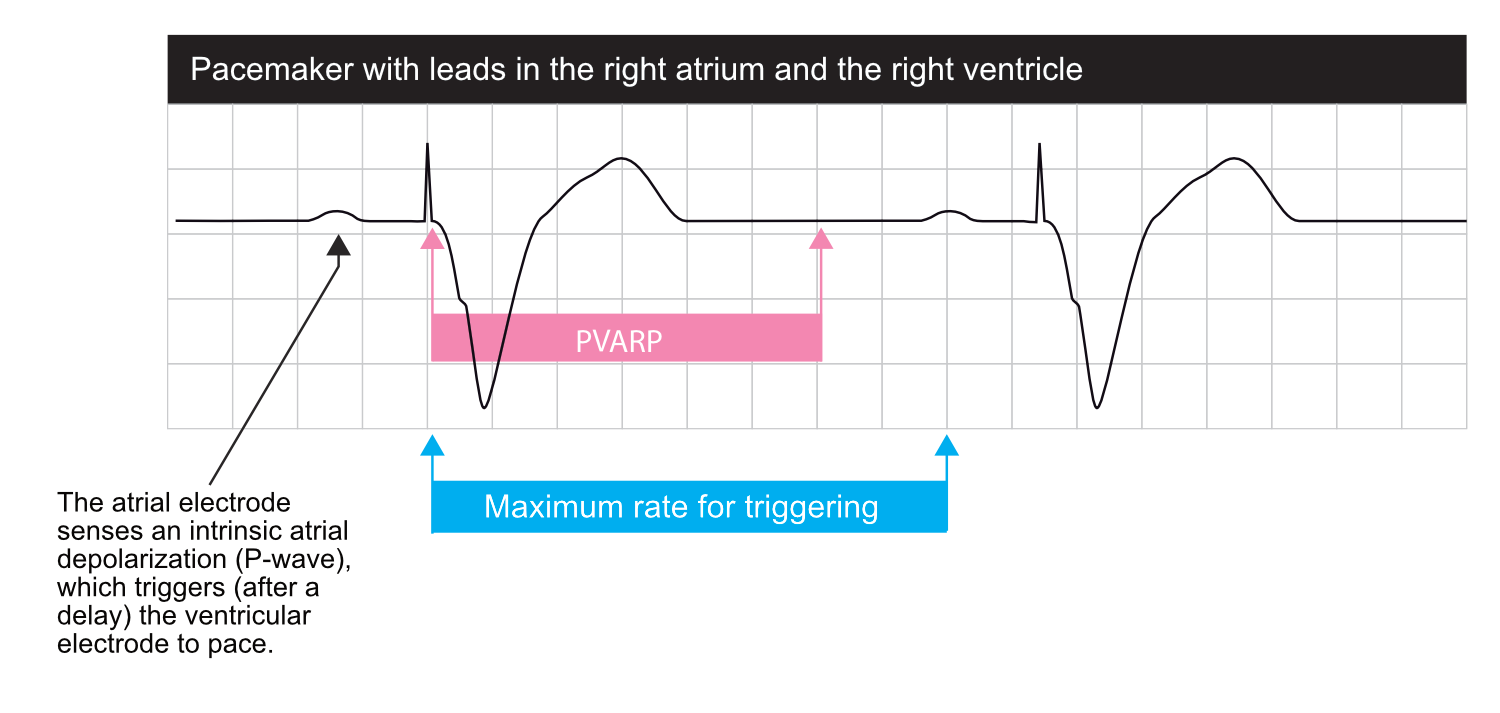
Stimulation threshold As previously discussed, myocardium may be excited by
Indications for pacemaker implantation Bradyarrhythmia is the main indication for

Pacemaker malfunction, troubleshooting and ECG Conventional surface ECG can reveal
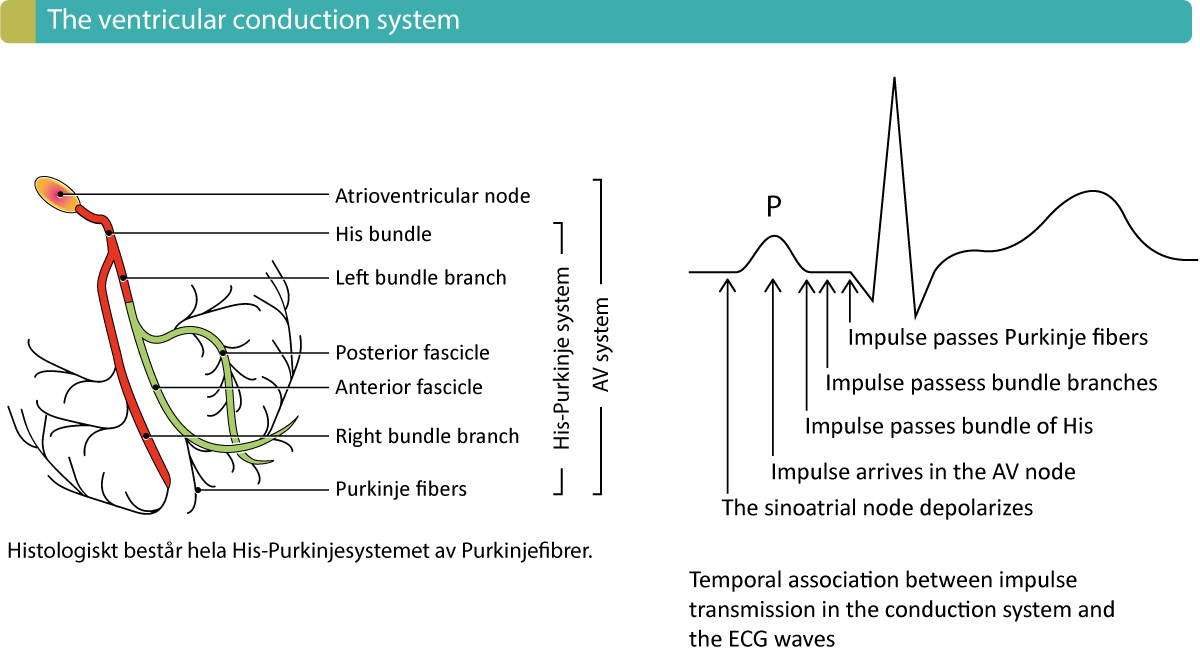
Atrioventricular block (AV block): definition, causes, diagnosis & management This

First-degree AV block: ECG criteria, clinical characteristics & management In

Second-degree AV block: ECG criteria, clinical characteristics & management In
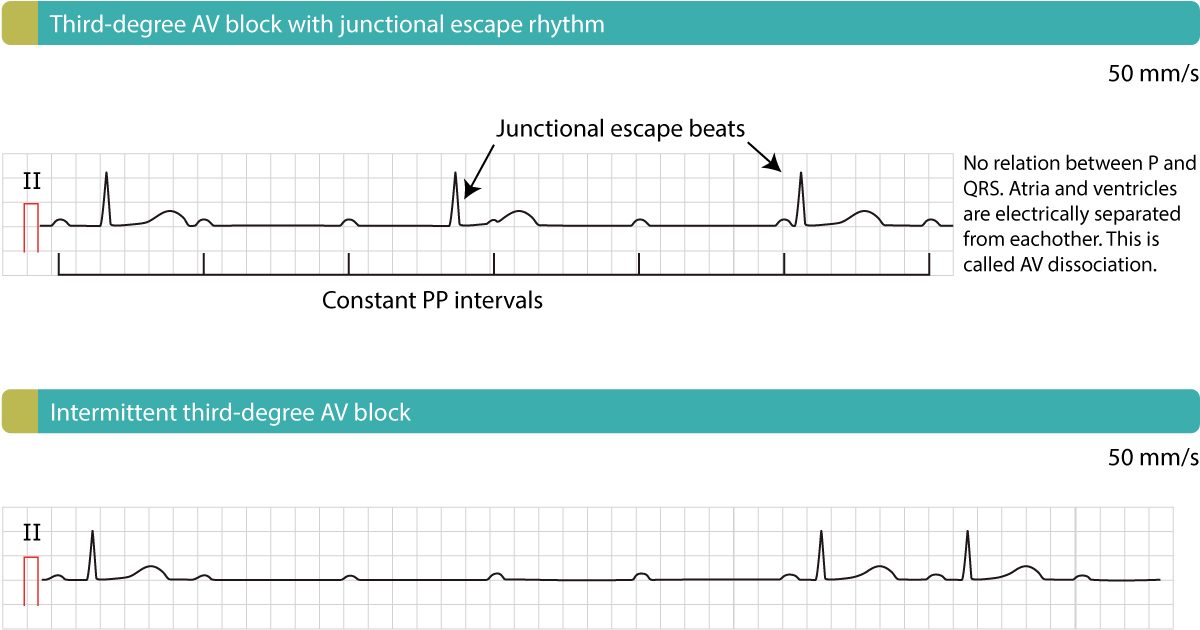
Third-degree (complete) AV block: ECG criteria, clinical characteristics and management
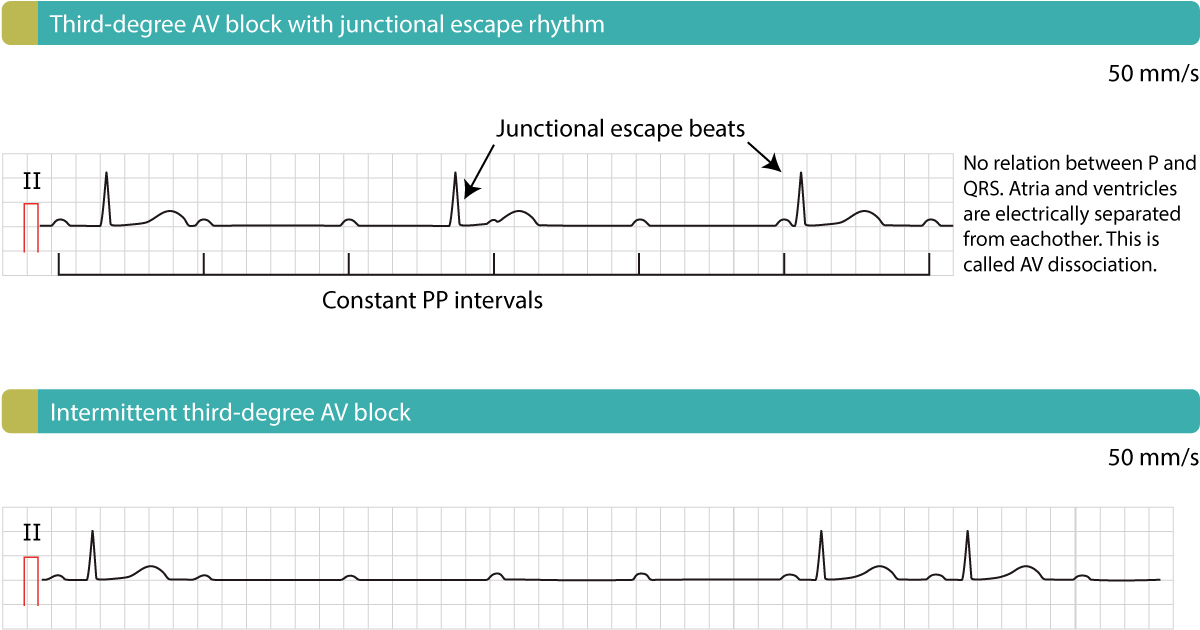
Management and treatment of AV blocks (AV-block 1, 2 &
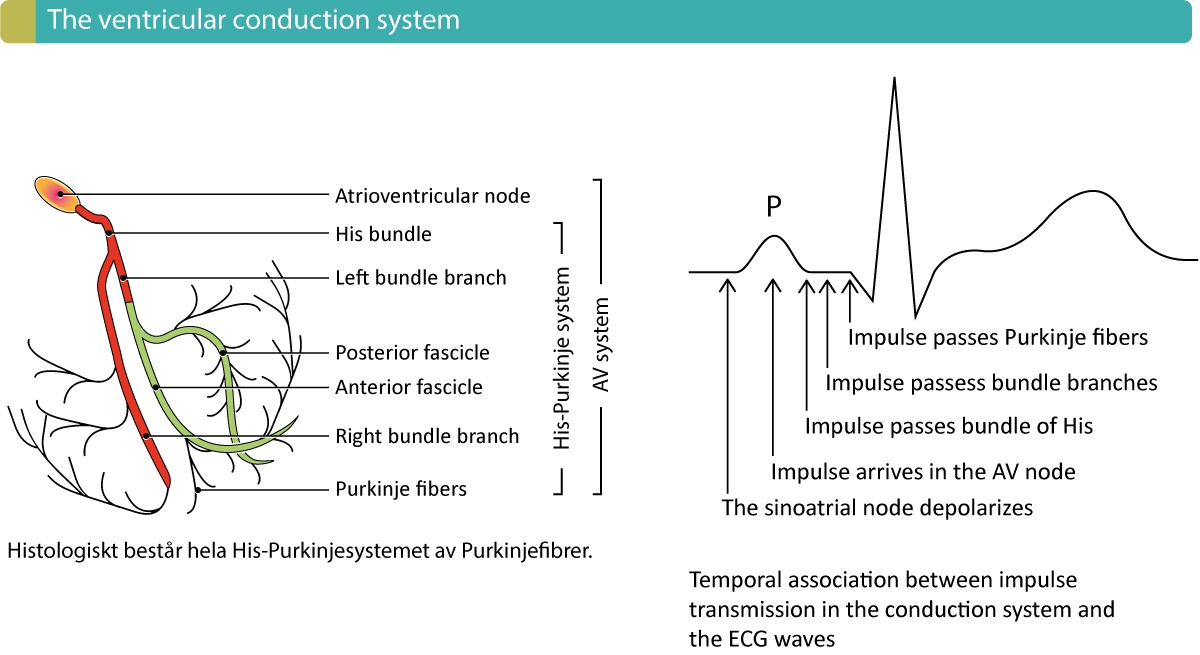
Intraventricular conduction delay (defect): constellations of bundle branch blocks and fascicular
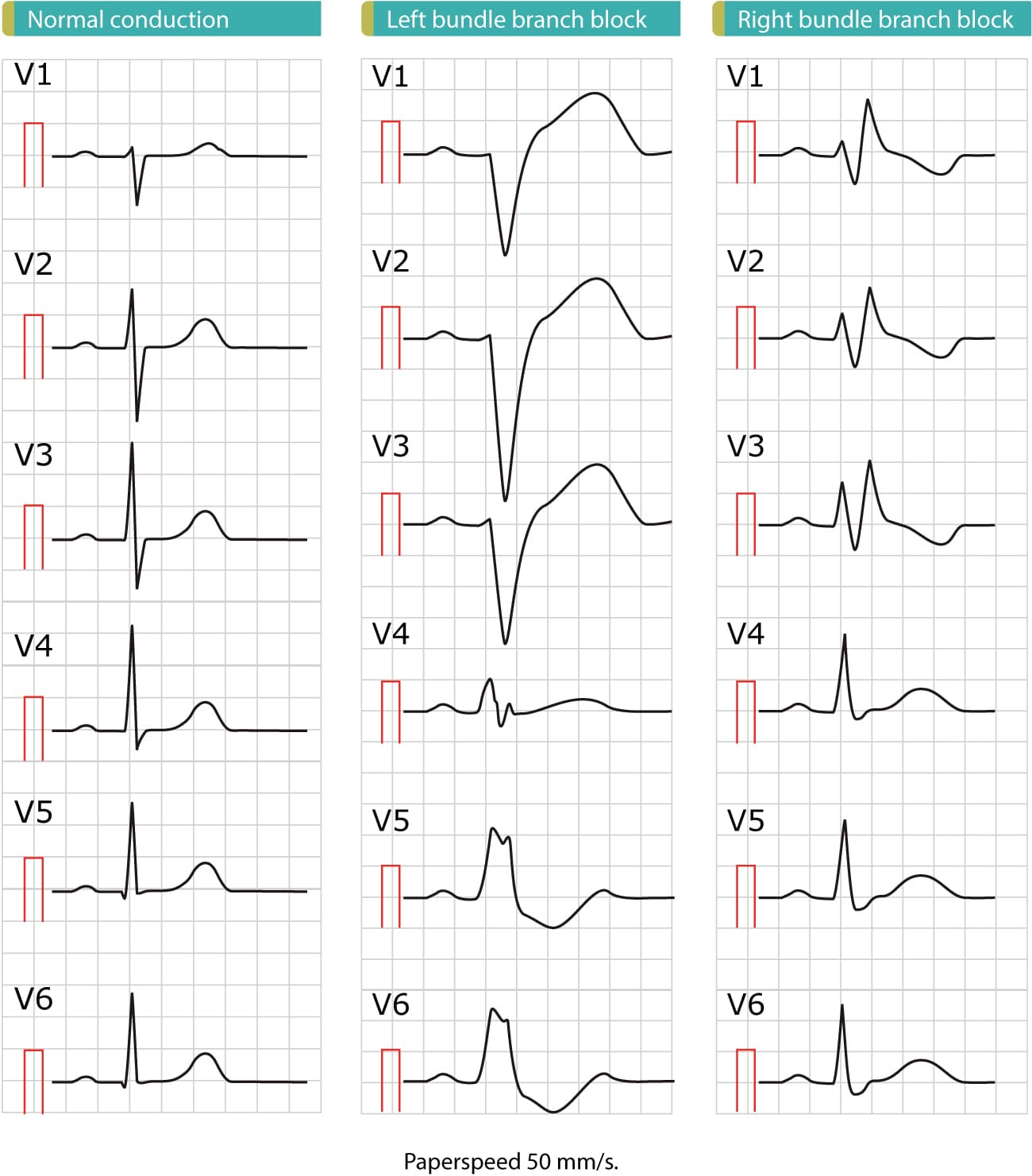
Left bundle branch block (LBBB): ECG criteria and clinical implications
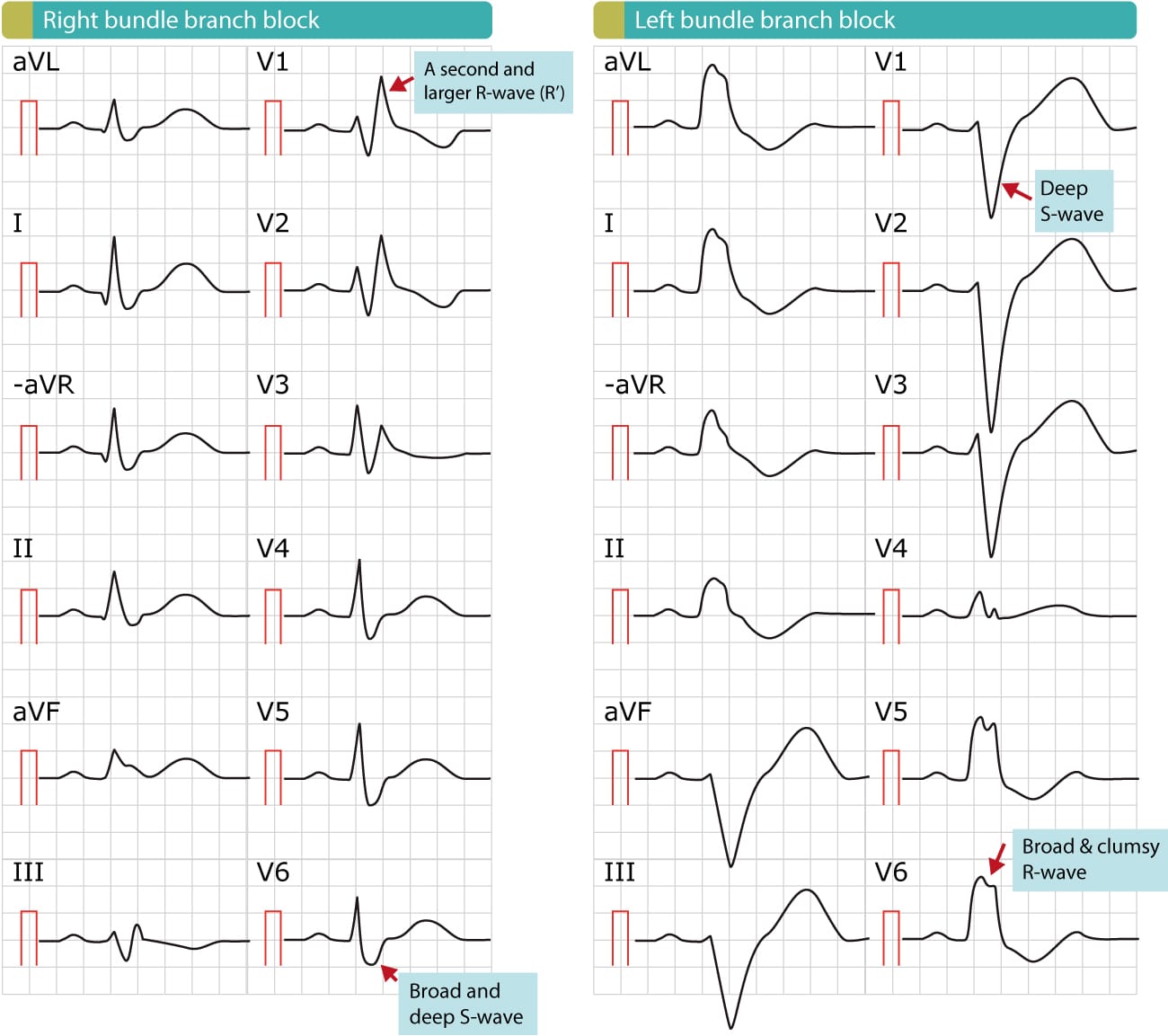
Right bundle branch block (RBBB) Right bundle branch block (RBBB)

Left bundle branch block (LBBB) in acute myocardial infarction (AMI): clinical
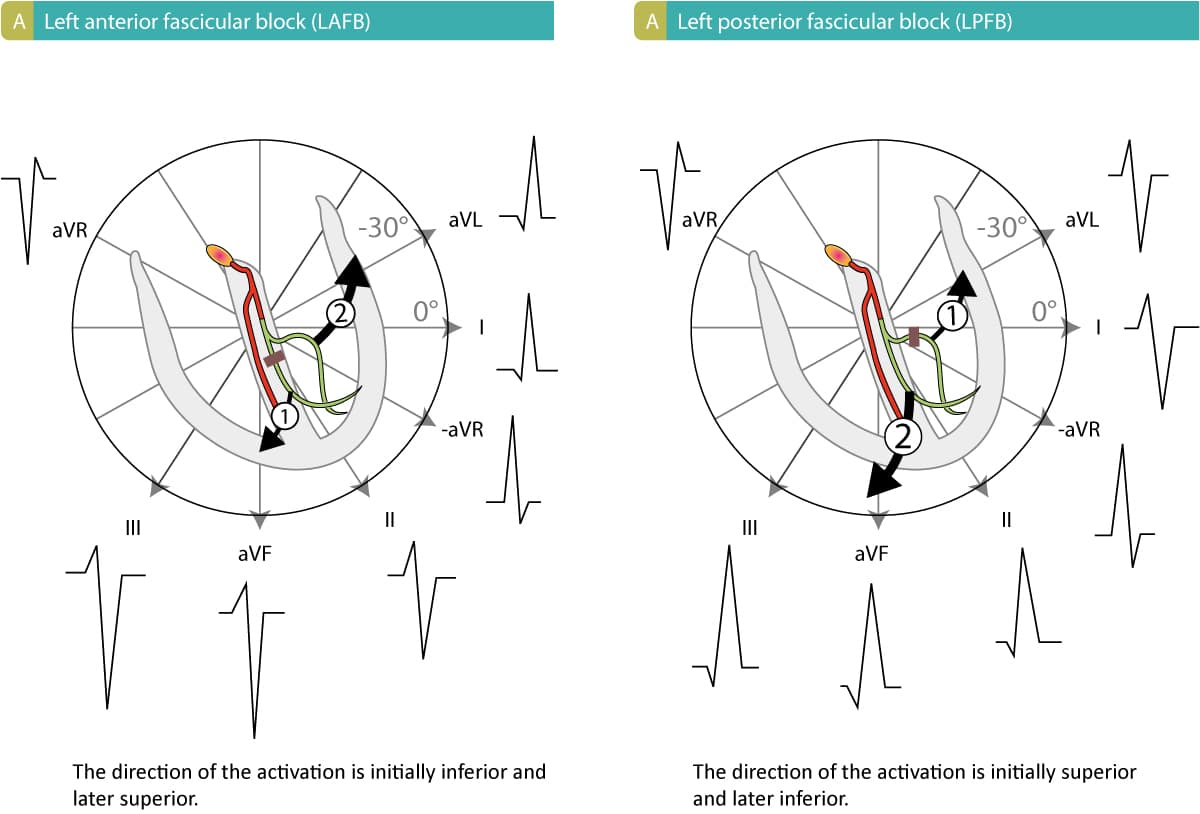
Fascicular block (hemiblock): left anterior fascicular block & left posterior
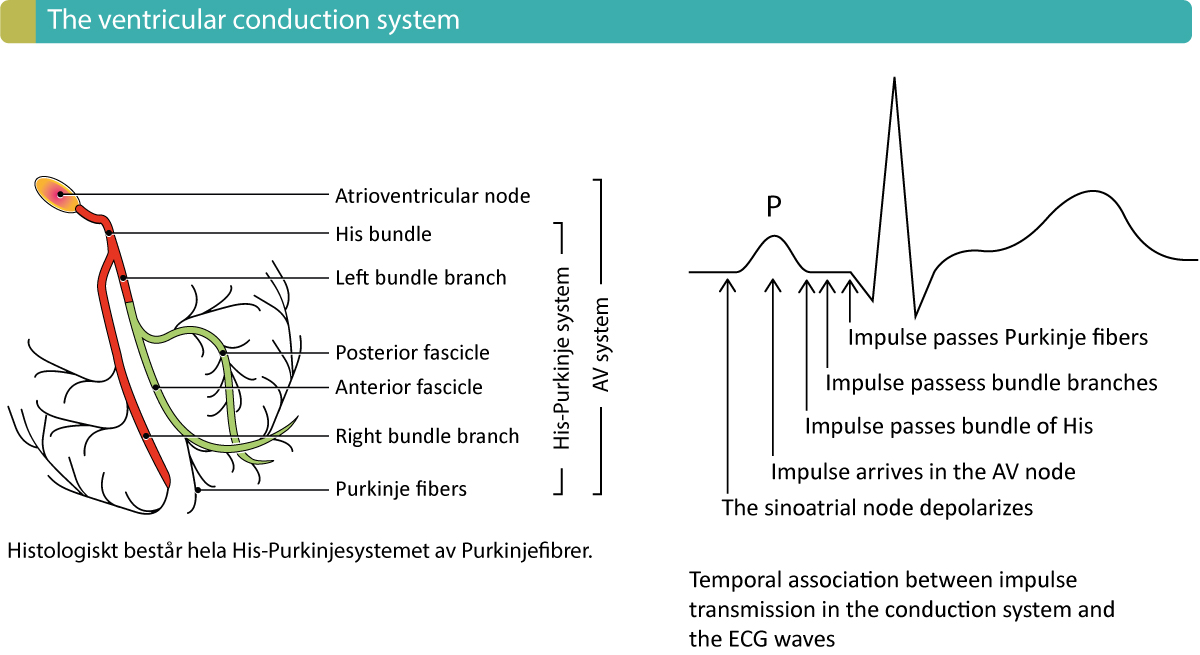
Nonspecific intraventricular conduction delay A nonspecific intraventricular conduction delay exists if

Evaluation and management of stable coronary artery disease Chronic coronary
Principles of atrial and ventricular enlargement (hypertrophy and dilatation) Cardiac
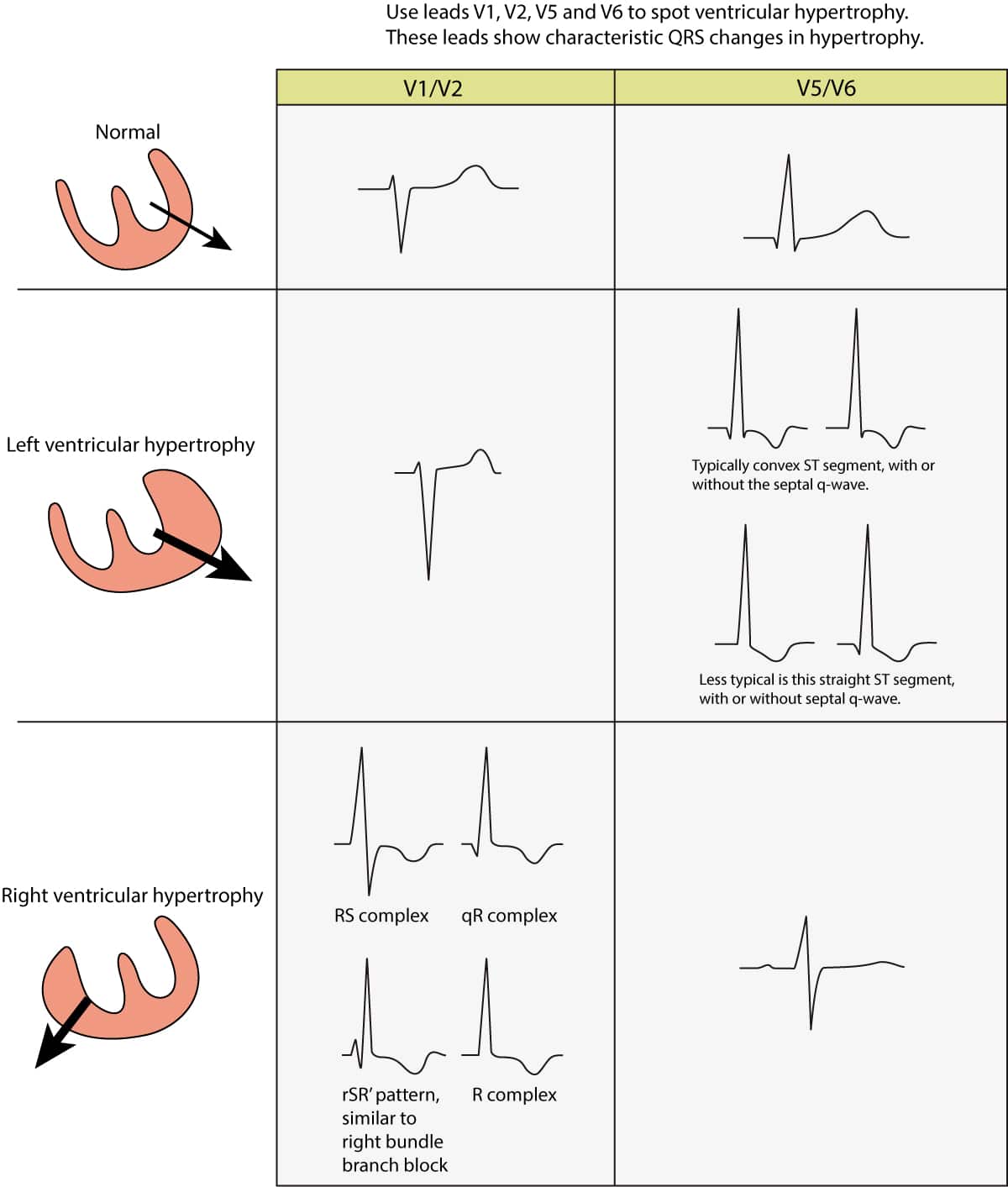
ECG and clinical characteristics in left ventricular hypertrophy (LVH) The following

ECG and clinical characteristics in right ventricular hypertrophy (RVH) Right ventricular hypertrophy

Biventricular hypertrophy Simultaneous hypertrophy of the left and right ventricle is

Atrial enlargement: left atrial enlargement (P mitrale) and right atrial

Coronary arteries and arterial territories The two main coronary arteries
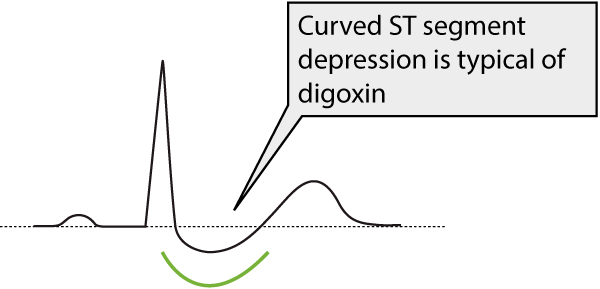
Digoxin ECG changes: arrhythmias, conduction defects and waveform changes Digoxin
The effect of antiarrhythmic drugs, beta-blockers and calcium channel blockers
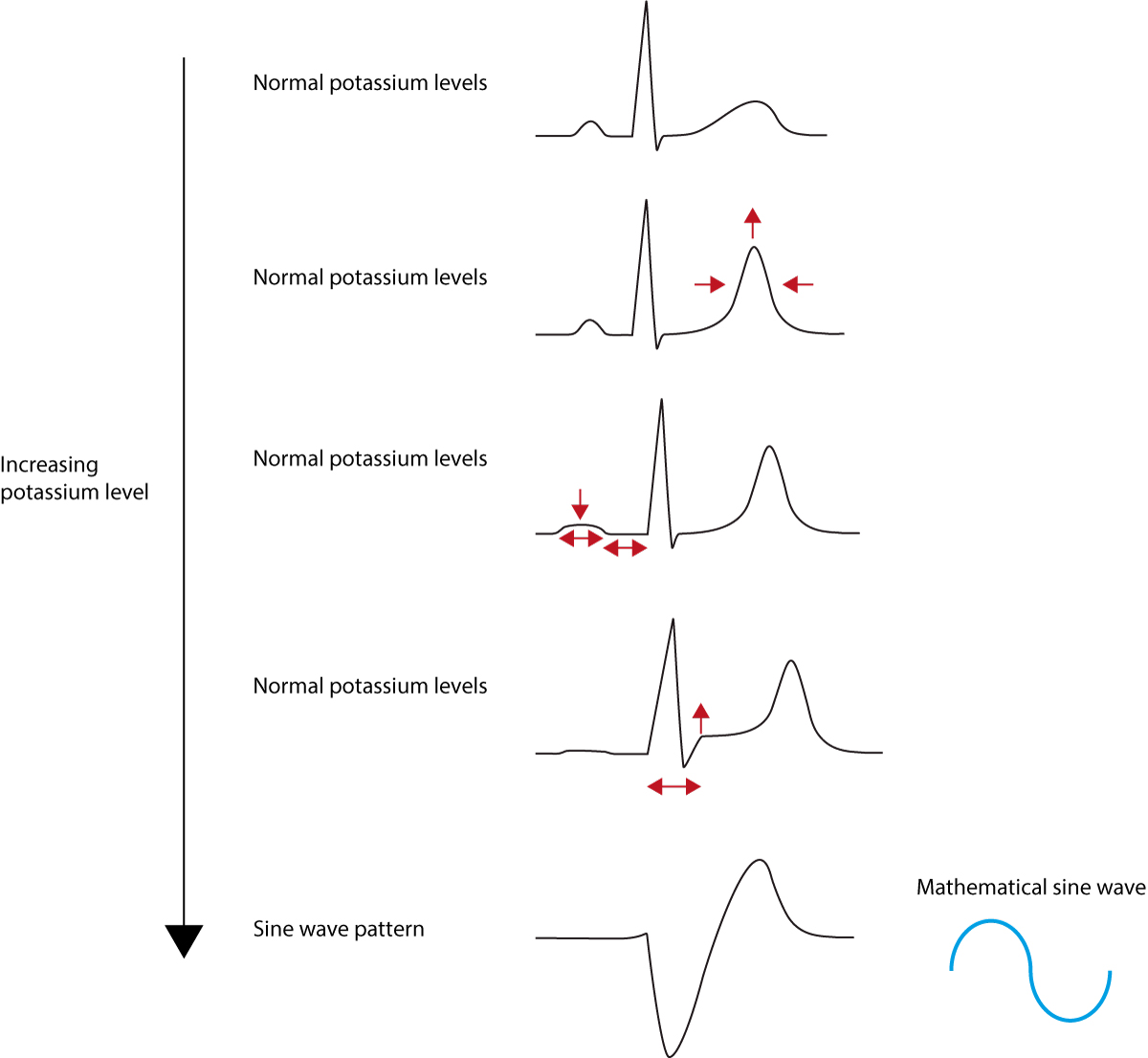
ECG changes due to electrolyte imbalance (electrolyte disorder) The normal cardiac action

J-wave syndromes: early repolarization pattern, Brugada syndrome, hypercalcemia and hypothermia

Brugada syndrome: A life-threatening arrhythmia with unknown prevalence Pedro Brugada

The early repolarization pattern and syndrome: from ECG criteria to management

Takotsubo cardiomyopathy (broken heart syndrome, apical ballooning syndrome, stress induced
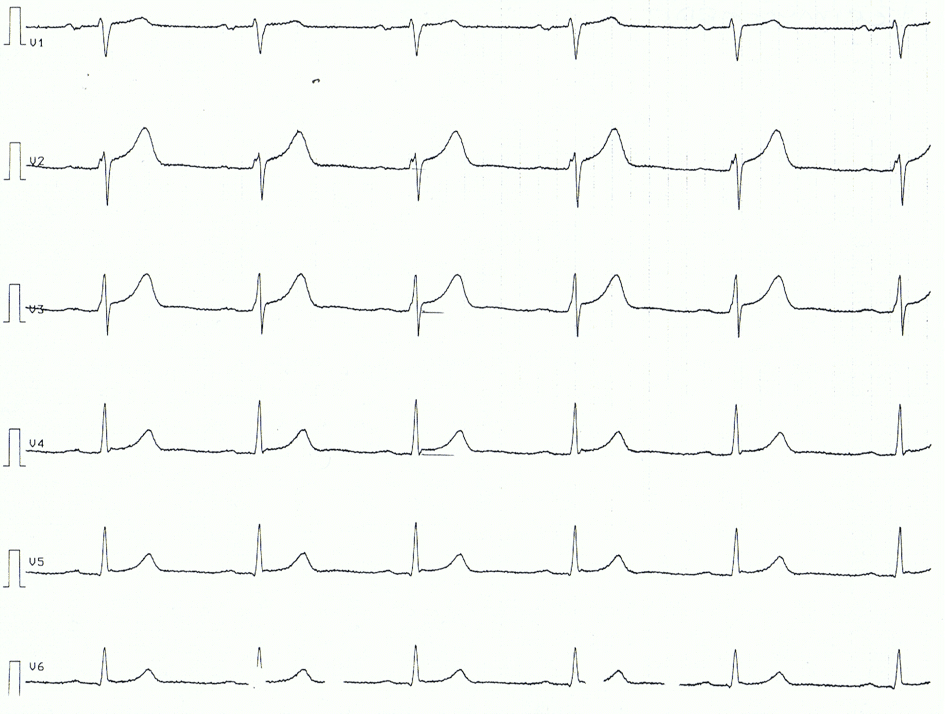
Pericarditis, myocarditis and perimyocarditis: ECG changes and clinical features The

Eletrical alternans: an ECG sign of pericardial effusion and cardiac
Diagnosis and treatment of bradycardia (bradyarrhythmia) Acute bradycardia with hemodynamic
We are dedicated to empowering clinicians with the most current, in-depth knowledge in cardiovascular medicine. Our platform offers a unique blend of expert insights, e-books, revision resources, and practical tools, designed to enhance your clinical practice and patient care. Join our community of dedicated healthcare professionals and elevate your practice evidence-based cardiovascular medicine.

The Cardiovascular 2025
